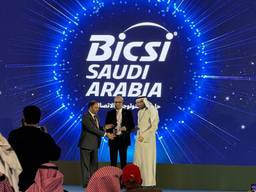Technical Training Isn’t Enough: The Role of Application in AV Learning

Related Content

Rethinking Education in AV
A Journey Toward Scalable Educational Solutions for AV Industry
I want to start this article with a warning to educators: this text contains some critical reflections on our education system.
As a parent of two school-aged children, I find myself in the role of study tutor during exam weeks. We review the material together, and I ask questions to check if they’ve retained the content. This experience highlights my main criticism of traditional schooling: it focuses heavily on memorization. Exams often reward those who can recall facts, rather than those who can apply what they’ve learned. In my daily interactions with my children and their peers, I see little emphasis on practical application.
Of course, there are schools and programs that prioritize hands-on learning, and I would love to hear about more of them.
This issue becomes even more concerning when we look at scaling knowledge in the audio and video (AV) industry. Many courses still focus on passing a final test, which encourages short-term memorization rather than lasting behavioral change or real-world application. Yet, our industry is fundamentally about applying knowledge.
So, how can we foster true application of content?
The concept of “learning by doing” is not new. Educational philosopher John Dewey argued over a century ago that education should be grounded in real-world experiences, and that students learn best when they are actively engaged in meaningful tasks rather than passively absorbing information (Dewey, 1938). His work laid the foundation for experiential learning, which remains highly relevant in technical fields like AV.
More recently, the effectiveness of “active learning” has been demonstrated in numerous studies. A landmark meta-analysis by Freeman et al. (2014) reviewed 225 studies in science, technology, engineering, and mathematics (STEM) education. The research found that students in active learning environments—where they participate in discussions, problem-solving, and hands-on activities—performed significantly better than those in traditional lecture-based settings. On average, exam scores improved by about 6%, and students in lecture-only classes were 1.5 times more likely to fail than those in active learning classes.
I’m a strong advocate for “hands-on” learning, where students can practice what they’ve learned. However, this often requires in-person instruction, which limits scalability due to distance, cost, and class size.
Another promising approach is the use of product application videos—covering everything from unboxing and setup to real-world use cases. I’d like to see more manufacturers embrace this format.
A third initiative could be exploration centers, managed by local distributors or associations, where users can experiment with equipment in a lab setting. While this requires investment, costs could be shared among manufacturers, increasing technology adoption in different regions.
I’m also excited about the potential of Virtual Reality (VR). Industries like mobility and medicine are already using VR for training, and I see huge potential for AV. For example, racing simulators adjust their behavior based on the car model selected, offering a realistic, hands-on experience. Imagine this in AV: you could select a DSP, microphone, amplifier, and speakers, connect and configure them virtually, and see how changes affect performance. This would be a powerful tool for technical training at scale.
Of course, the effectiveness of any applied learning activity depends on a fundamental trait: learner responsibility. Companies can provide content and opportunities, but if learners don’t take ownership of their growth, scalable learning will remain out of reach. Long, successful careers are rarely about luck—they’re about taking responsibility for personal development and applying knowledge in real-world roles. This is my message to new AV professionals.
A more realistic and cost-effective approach might be for teachers and tutors to spark curiosity, encouraging learners to close knowledge gaps themselves. For example, after introducing acoustic concepts, a teacher could challenge students to investigate how sound behaves in different environments, rather than simply providing the answers. This subtle shift encourages exploration and practical understanding, moving beyond rote memorization.
Research supports these ideas: studies show that active learning and practical application significantly improve retention and job readiness (World Economic Forum’s Future of Jobs Report, 2023).
What do you think? Does this resonate with your experience? Do you know of courses or schools that apply these principles? I’d love to hear your thoughts and examples.
In my next article, I’ll discuss the knowledge gap between different departments within AV companies.
Recommended Content
End 2025, Enter 2026 (AV Industry)

2025 Review – The Year Through The Eyes Of LANG





Please sign in or register for FREE
If you are a registered user on AVIXA Xchange, please sign in
Most AV minds absorb new technical skills through experience more than anything else!
@Cristiano Mazza, CTS , muchos de nuestra generación probablemente obtuvimos un grado universitario, pero fue hasta que salimos al campo y comenzamos a vivir experiencias que tuvimos una verdadera capacitación. Creo que en muchos trabajaos, pero especialmente en AV la experiencia lo es todo. Gracias por tu valiosa aportación amigo.